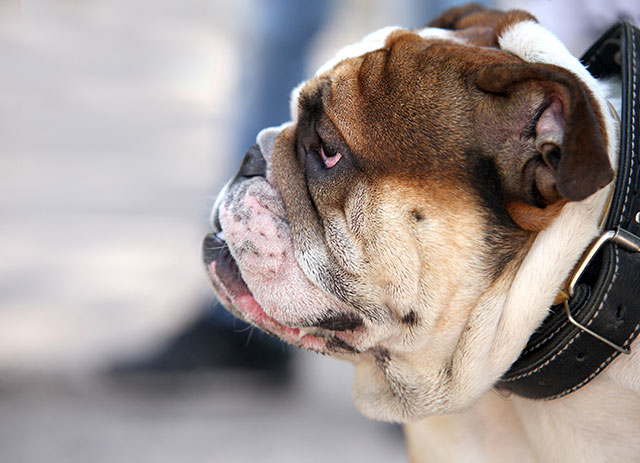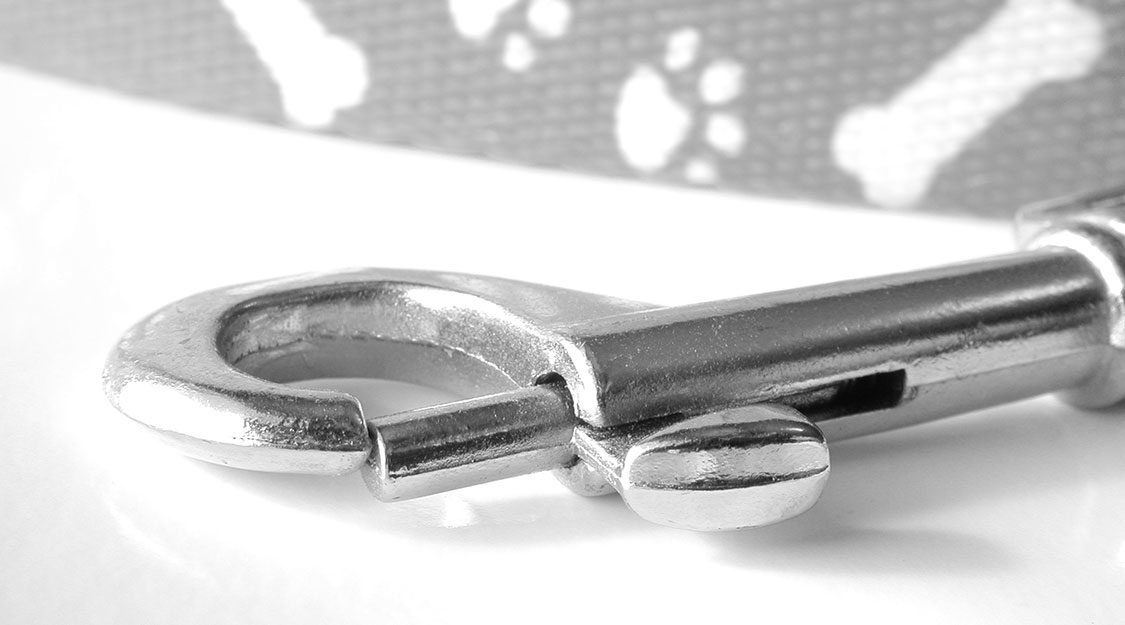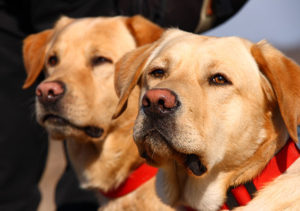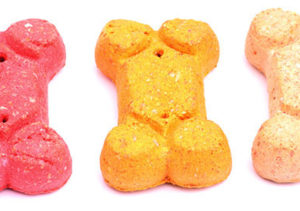Start with the appropriate collar

One of the best leash training methods created today does so that encourages the dog to develop awareness of its owner. To begin, you should use a sturdy, flat or rolled buckle collar made of leather or nylon.
Although popular among obedience trainers, slip collars – which tighten and release in response to tension – are not necessarily a good choice for teaching leash manners. Most dogs are overly excitable on the leash and often pull heedlessly against this type of collar, sometimes resulting in damage to the trachea. Though appropriate in the right hands, this collar is best left to those experienced in its use.
For the determined dog that already has a habit of pulling, the “headcollar” is the most effective training tool. This relatively recent innovation loops around the top of the dog’s neck and muzzle. The loops are attached by an additional strap on each side of the head and one below the muzzle. The leash attaches to the headhalter, the concept is based on the simple physical rule that where the head goes, the rest of the animal must follow.
The headcollar turns the dog toward the walker whenever tension is applied as it simultaneously tightens around the muzzle and back of the head, encouraging the dog to move in the direction of its owner to release the pressure.
Specifically designed to offer a gentle alternative to other collars, initial hands-on instruction from a trainer who is familiar with its use is still a good idea in order to have the proper fit and more effective method.
For the standard size breed that is around six months or older, a prong, or pinch collar, may work best – and also for the adult dog that naturally pulls. Made to constrict in response to applied tension, then instantly expand again when tautness is released, this metal collar has large prongs that turn inward around the dog’s neck, creating what could be described as a blunted, teeth-like effect.
As with the headcollar, correct fit and size are important and are best judged by a trainer well educated in proper prong-collar usage. One that is too tight pinches the dog continually, which is counterproductive to training and cruel to the dog. One that is too loose loses its effectiveness.
A properly fitted prong collar should sit high on the dog’s neck, just below the ears. You should be able to slip your fingers underneath the collar when pressure is not applied, but it should not be so loose that it slips down around the trachea.
Despite its somewhat formidable appearance, the correct use of a prong collar simply gives the dog cause to stop and take notice of its owner. The prongs only pinch if pressure is applied, such as when the dog pulls. The pinch is in direct relationship to the amount of pressure applied.
The more pressure that is applied, the harder the pinch will be. Prong collars work well for leash training because the dog controls how much pressure it puts on its collar, and therefore, controls the amount of pinch it receives. This allows the animal to avoid the pinch by maintaining slack in the lead.



